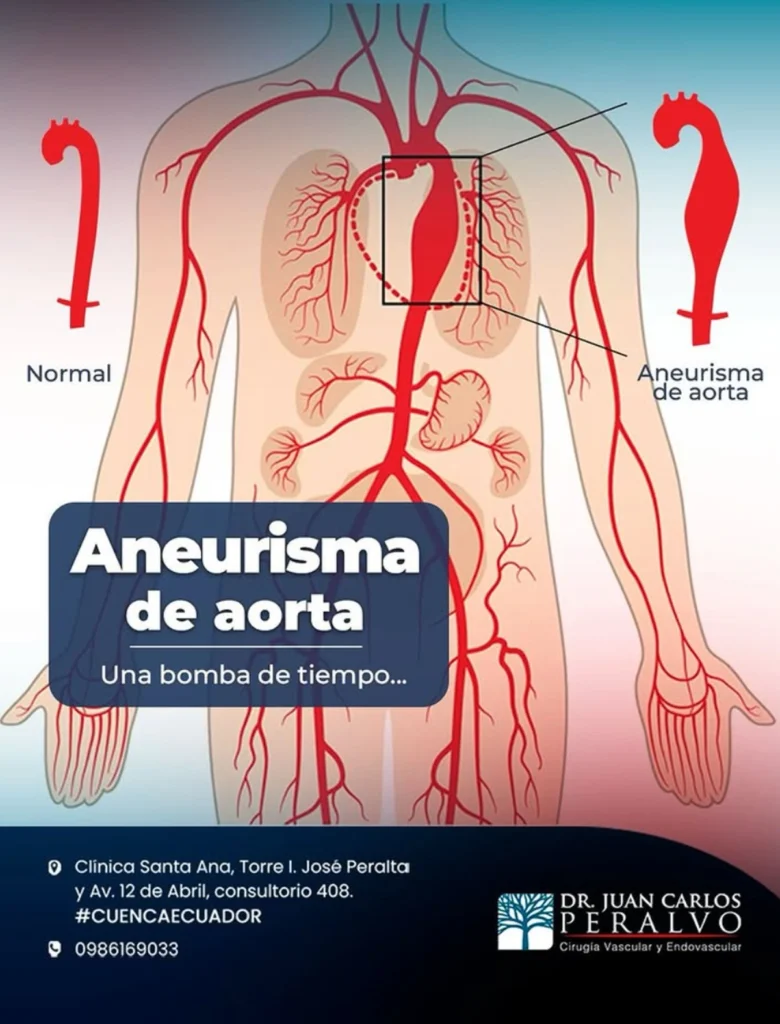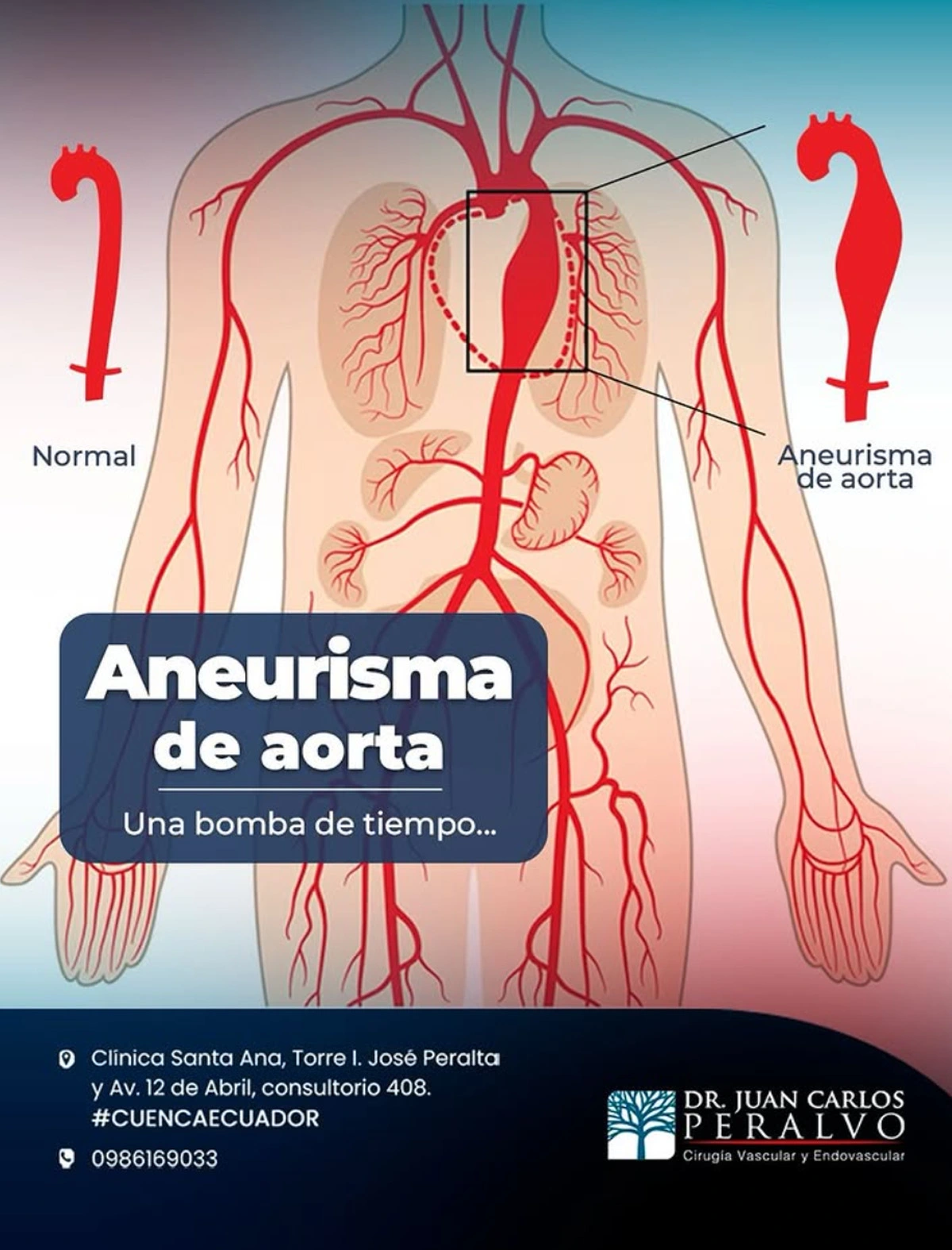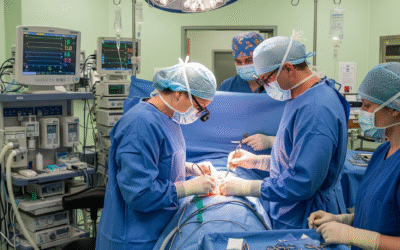
An aortic aneurysm is an abnormal dilation of the body’s largest artery, the aorta. It often has no symptoms, but if it ruptures, it can cause life-threatening internal bleeding. Dr. Juan Carlos Peralvo, a Vascular and Endovascular Surgeon in Cuenca, explains how to detect it early and reduce risks.
Why does an aortic aneurysm form?
An aortic aneurysm occurs when the aortic wall weakens and bulges like a balloon. Risk factors include:
- Chronic high blood pressure
- Smoking
- Older age
- Family history of aneurysms
- High cholesterol or atherosclerosis
Warning signs
Most aortic aneurysms are silent. However, they may present warning signs like:
- Severe pain in the abdomen, chest, or back
- Pulsating sensation in the abdomen
- Dizziness or fainting in severe cases
These symptoms require immediate medical attention.
Diagnosis and treatment
Dr. Peralvo uses advanced imaging methods to diagnose aneurysms:
- Doppler ultrasound
- CT scan
- MRI scan
Treatment options:
- Regular monitoring for small, stable aneurysms
- Open surgery or endovascular repair for large, fast-growing, or high-risk aneurysms
💡 Book your preventive checkup with Dr. Peralvo: Click here
Conclusion
An aortic aneurysm is a silent threat, but prevention and timely diagnosis can save lives. With Dr. Juan Carlos Peralvo, you can access specialized testing and advanced treatment in Cuenca.





